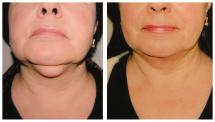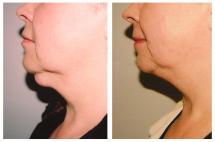Tumours of the skin is a serious area of medicine which is dealt by oncologists, dermatologists and plastic surgeons. Tumour of the skin refers to a pathological overgrowth of tissue cells that form into a delineated tumour.
There are two main categories of tumours: benign and malignant.
Benign tumours of the skin include warts, lipoma (wen), papilloma, atheroma, hemangiomas, cysts, some moles, keratoses, and others.
Malignant tumours of the skin include precancer skin, hair matrix carcinoma, fibroma, squamous cell carcinoma, some types of nevi (moles), melanoma and others.
Tumours have a different etiology: congenital and acquired during life.
Solar radiation is dangerous as it may cause the occurrence of such tumours as melanoma, especially with fair-skinned individuals. Medical literature around the world is constantly reminding that one must pay increased attention to the emergence of new or the increase in the size of the previously existing skin tumours. It must be remembered that some of them are able to change not only in appearance (color, shape, borders), but also grow into malignant ones.
In such cases, it is very important to consult a plastic surgeon or dermatologist immediately. Depending on a given case, the tumour is removed and sent for histological examination. There is also a method of rapid diagnosis with the aid of modern special equipment.
Tumours are usually asymptomatic, but depending on their growth, the patient begins to be bothered with itching, pain, bleeding, as well as an aesthetic defect.
The diagnosis and treatment of tumours should be approached very seriously and one must abide by the established international canons of surgery. It is necessary to observe the exact parameters of the excision boundary width and depth of tumour (from 0,3 mm to 3,0 cm), depending on the clinical diagnosis. All tumours should be removed must be mentioned in the order sent to histological study.
Laser therapy is used only if you remove some neoplasms (papilloma, warts, point hemangiomas, keratoses) with 100% confidence in their diagnosis. In doubtful cases, a prior histological examination is necessary!
Age: from infancy to senile.
Anaesthesia: Local anaesthetic
Duration: 10 minutes-1 hour.
Postoperative rehabilitation:
- The patient goes home after 1-2 hours after the operation.
- Sutures are removed 7-9 days later.
- Dynamic observation every 3 to 6 months after surgery over the following years.
- Ability to return for work in 1-2 days.
What is important to consider?
Tumours are a serious branch of medicine.
One must pay an increased attention to own skin on the face and body.
One must immediately consult a plastic surgeon who has considerable experience in oncology.








